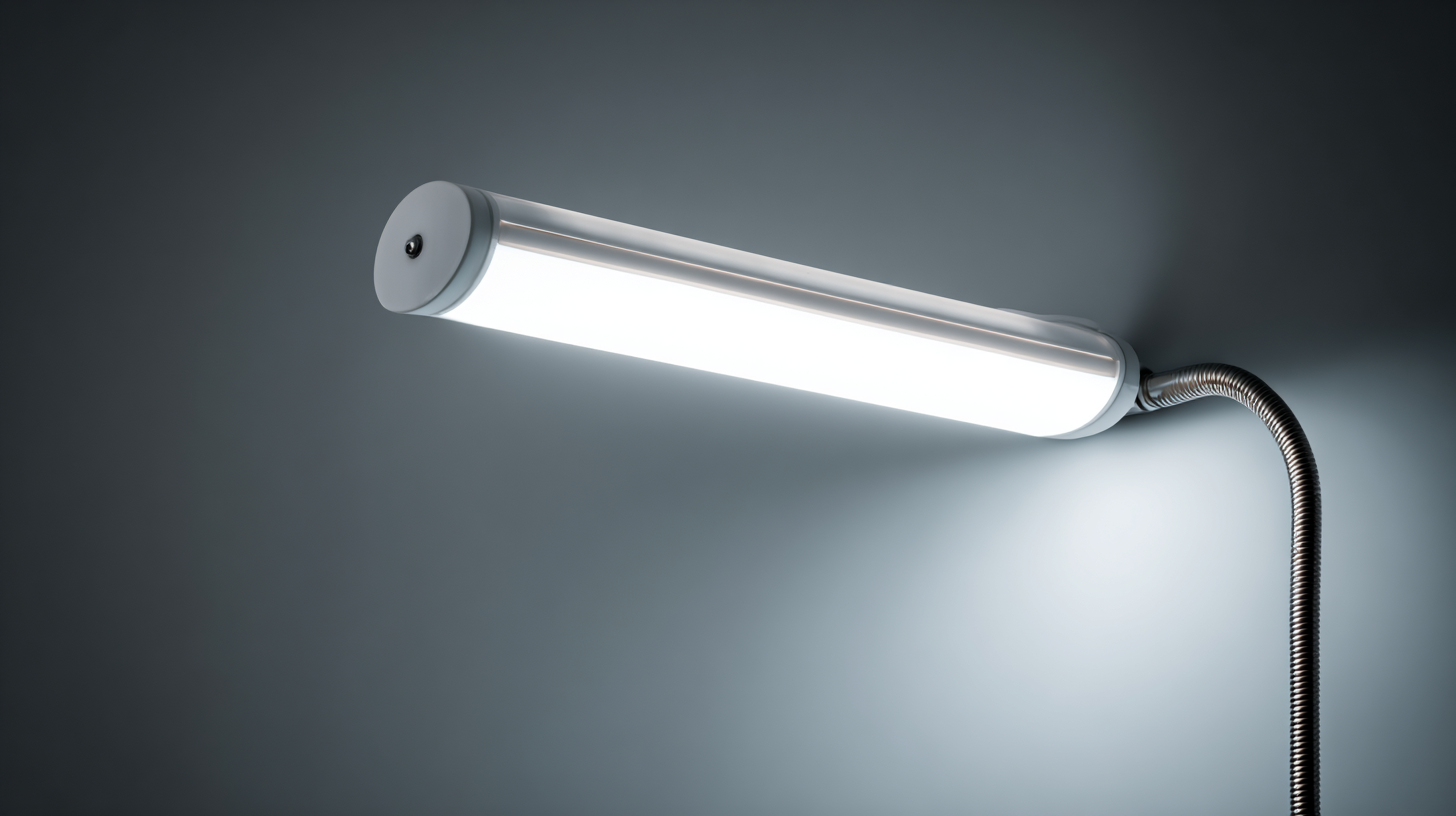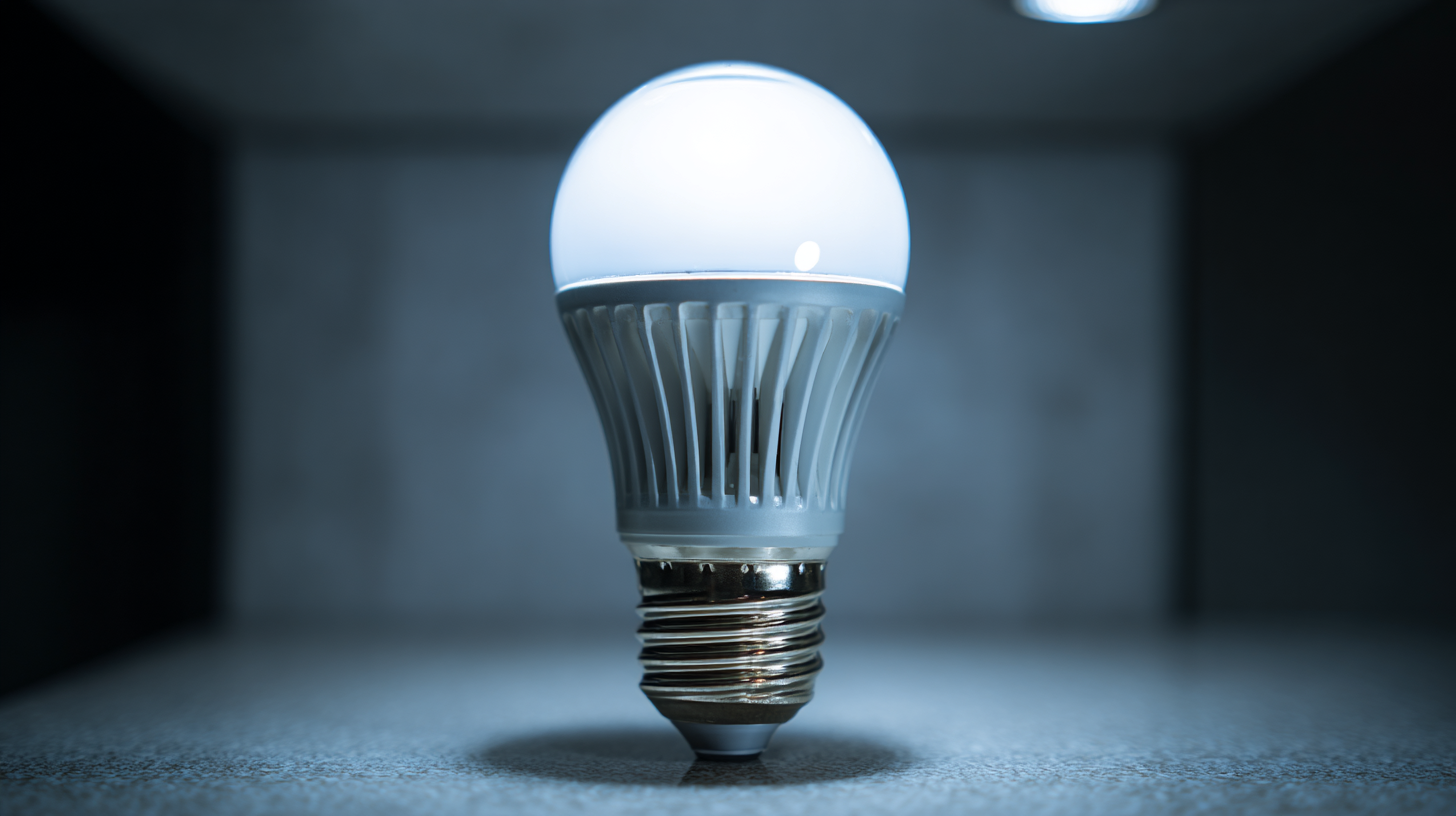Ultimate Checklist for Choosing the Best Led Lamp for Your Needs
As the global demand for energy-efficient lighting continues to surge, the LED lamp market is poised for significant growth in the coming years. According to a recent market analysis report by Allied Market Research, the global LED lamp market is expected to reach approximately $100 billion by 2025, growing at a compound annual growth rate (CAGR) of 13.2% from 2018 to 2025. This shift towards LED technology is driven by the increasing emphasis on sustainability, longer lifespans of LED products, and their capacity to reduce energy consumption by up to 80% compared to traditional incandescent bulbs. As consumers and businesses alike strive to make eco-friendly choices, selecting the ideal LED lamp has become more critical than ever. This blog will provide you with an ultimate checklist to help you make informed decisions and choose the best LED lamp tailored to your needs.

Key Factors to Consider When Selecting Your Ideal LED Lamp
When selecting the ideal LED lamp, several key factors must be taken into account to ensure it meets your specific needs. First and foremost, consider the brightness of the lamp, measured in lumens. Depending on where you plan to use the lamp, you'll want to select a brightness level that suits the space. For example, a cozy reading nook may require a warm, soft glow, while a workspace might need brighter, cooler light to enhance focus.
Another important aspect to evaluate is the color temperature, which can significantly affect the atmosphere of a room. Ranging from warm white (around 2700K) to daylight (up to 6500K), the color temperature influences how cozy or energizing the light feels.
Additionally, consider the lamp's energy efficiency and lifespan. Opt for models with a high energy efficiency rating to save on electricity costs, and always check the estimated lifespan to ensure you won’t need frequent replacements. By factoring in brightness, color temperature, and efficiency, you can confidently choose an LED lamp that complements your lifestyle and enhances your environment.
Different Types of LED Lamps and Their Best Uses
When selecting the perfect LED lamp, understanding the different types available and their best applications is essential. According to a report by the U.S. Department of Energy, LED lighting has evolved significantly, offering multiple options such as general lighting, accent lighting, and task lighting. Each type serves distinct purposes; for instance, general lighting is best achieved through A19 bulbs, which provide accessible brightness for everyday use, while floodlights are ideal for outdoor areas, illuminating larger spaces effectively.
Moreover, task lighting focuses on specific activities, such as reading or cooking, and can be best fulfilled with LED desk lamps or under-cabinet lighting. A study from the Lighting Research Center indicates that task lighting can enhance productivity and reduce eye strain, proving its importance in work environments. Additionally, color temperature plays a vital role; warmer tones (2700K-3000K) are recommended for living spaces, while cooler tones (4000K-5000K) are preferred in workspaces, effectively impacting mood and efficiency. Understanding these distinctions can help consumers make informed choices tailored to their specific needs.
Understanding Your Space: Size and Lighting Needs Assessment
When it comes to selecting the best LED lamp for your space, understanding your specific needs is paramount. The size of the room plays a crucial role in determining the type of lighting required. According to the Illuminating Engineering Society (IES), for optimal lighting, you should consider offering 20 lumens per square foot of space. For example, a living room measuring 200 square feet would require approximately 4,000 lumens to ensure adequate illumination.
It’s also essential to evaluate the activities performed in the space. Task-oriented areas, such as kitchens and offices, typically demand brighter lighting compared to relaxation areas like bedrooms. Research from the American Society of Interior Designers (ASID) highlights that appropriate lighting can enhance productivity by nearly 25%. Therefore, knowing your space and its usage not only helps in selecting the correct LED lamp but also ensures that you achieve the perfect ambiance for your needs.
Ultimate Checklist for Choosing the Best LED Lamp for Your Needs
This chart illustrates the average space size (in square feet) and the corresponding wattage needs for effective LED lighting. Understanding these dimensions can help you choose the right LED lamp for your specific environment.
Energy Efficiency and Lifespan: What You Should Know
 When choosing an LED lamp, understanding energy efficiency and lifespan is paramount. Recent studies underline the significant role that advanced energy-efficient materials play in reducing energy demands. For instance, energy-efficient construction methods can decrease operational energy usage by up to 30%, making a compelling case for opting for LED lighting, which typically consumes at least 75% less energy than traditional incandescent bulbs. Moreover, LED lamps have an impressive lifespan, lasting up to 25,000 hours or more, while traditional options last around 1,000 hours. This longevity not only translates into less frequent replacements but also contributes to reduced overall waste.
When choosing an LED lamp, understanding energy efficiency and lifespan is paramount. Recent studies underline the significant role that advanced energy-efficient materials play in reducing energy demands. For instance, energy-efficient construction methods can decrease operational energy usage by up to 30%, making a compelling case for opting for LED lighting, which typically consumes at least 75% less energy than traditional incandescent bulbs. Moreover, LED lamps have an impressive lifespan, lasting up to 25,000 hours or more, while traditional options last around 1,000 hours. This longevity not only translates into less frequent replacements but also contributes to reduced overall waste.
In a world increasingly focused on sustainability, incorporating energy-efficient lighting into your environment is essential. With a twenty-year dataset showcasing district campus building energy systems, it’s evident that adopting LED technology can significantly support the transition to decentralized and decarbonized energy systems. Additionally, innovations such as confidence-aware energy management systems highlight the potential for enhanced functionality in managing energy consumption. By selecting the right LED lamp, you're not just investing in a product; you're participating in a broader movement towards achieving environmental sustainability in building practices.
Choosing the Right Color Temperature and Brightness for Your Environment
When selecting an LED lamp, understanding color temperature and brightness is crucial for creating the right ambiance in your environment. Color temperature, measured in Kelvin (K), affects how warm or cool a light appears. For example, a lamp with a color temperature of 2700K emits a warm yellow light, ideal for residential spaces like living rooms or bedrooms, promoting relaxation. On the other hand, a cooler light, around 5000K to 6500K, mimics daylight and is often preferred in workspaces or kitchens, enhancing alertness and concentration. According to the American Society of Interior Designers, the right color temperature can significantly influence mood and productivity.

Brightness, measured in lumens, also plays a vital role in your lighting choice. The Illuminating Engineering Society states that for general indoor lighting, a range of 100 to 800 lumens is appropriate, depending on the specific application and the size of the room. For example, for reading or intricate tasks, a higher lumen output is necessary to avoid eye strain. It's essential to consider both the color temperature and brightness in tandem, as they can greatly impact not only the aesthetic of a space but also functional aspects like safety and comfort. Taking the time to evaluate these factors will ensure that your LED lighting meets both your needs and preferences.
